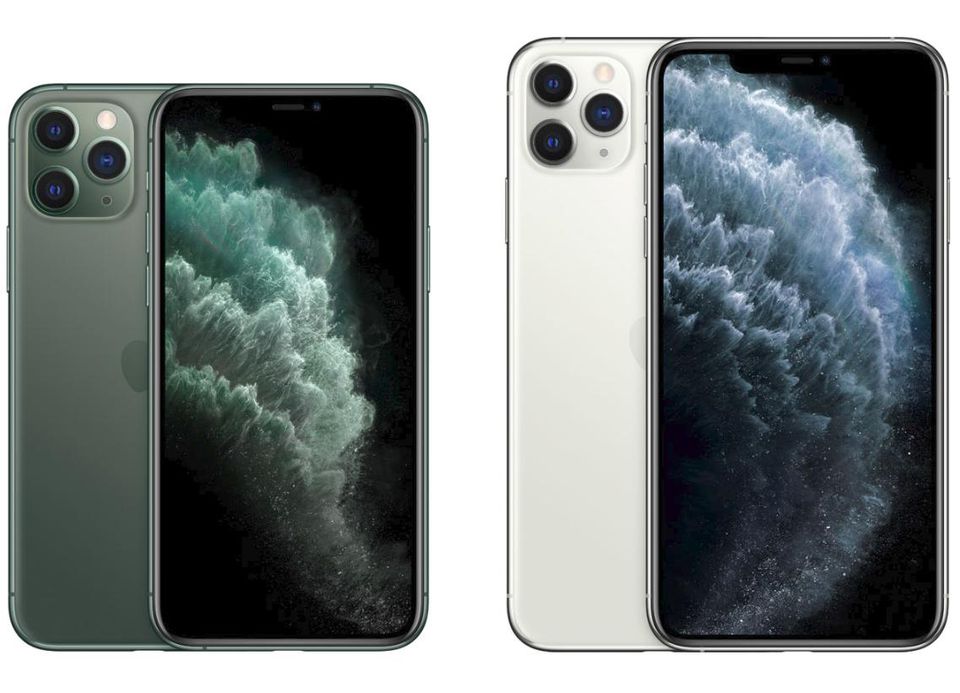The iPhone 11: New, cheaper, iPhone that does more
By not buying as much as they used to, consumers spoke to Apple, and it seems Apple is listening. The latest version of the iPhone line was released last week Tuesday, and the price of the basic model has dropped by $50, even though the new device can do more. Three models were released: iPhone […]

By not buying as much as they used to, consumers spoke to Apple, and it seems Apple is listening. The latest version of the iPhone line was released last week Tuesday, and the price of the basic model has dropped by $50, even though the new device can do more. Three models were released: iPhone 11, iPhone Pro, and iPhone 11 Pro Max. The new phones will be available in US stores this Friday, or 20 September 2019.
These are the prices of the smartphones: iPhone 11 (64GB, 128GB, and 256GB) for $699, $749, and $849 respectively; iPhone 11 Pro (64GB, 256GB, and 512GB) for $999, $1,149, and $ 1,349, respectively; and iPhone 11 Pro Max (64GB, 256GB, and 512GB) for $1,099, $1,249, and $1,449, respectively. By way of comparison, Apple’s entry-level device for last year – the iPhone XR – cost $750 and it sold the most. As noted by New York Times, Apple might have hit the ceiling this past year, as sales of the two models that began at $1,000 or more in last year’s release lagged expectations. The falling price suggests Apple sees that trend and is trying to entice more people to upgrade.”
Here are the differences between iPhone 11 (and iPhone 11 Pro), as reported by MacRumors: 6.1-inch LCD display (5.8/6.5-inch OLED HDR displays), 1792×828 display with 326 pixels per inch (ppi) (2436×1125/2688×1242 display with 458ppi), Dual 12-megapixel cameras (wide and ultra-wide) (Triple 12-megapixel cameras (wide, ultra-wide, and telephoto)), Optical Image Stabilization (Dual Optical Image Stabilization), Aluminum frame (Stainless steel frame), Six colors (Four colors), Glass body (Matte glass body), 1 hour longer battery than XR (4/5 hour longer battery than XS/XS Max), IP68 water resistance at two feet (IP68 water resistance at four feet), Up to 256 GB storage (Up to 512 GB storage), Gigabit LTE 2×2 MIMO (Gigabit LTE 4×4 MIMO), Ships with 5Watts charger (Ships with 18Watts charger). (MIMO stands for “Multiple-Input Multiple-Output,” which is a wireless technology that uses multiple transmitters and receivers to move more data at the same time. LTE means “Long-Term Evolution,” or 4G. )
The following features are common to the iPhone 11 and iPhone 11 Pro: Haptic Touch, True Tone display support, Wide color display,12-megapixel TrueDepth front-facing camera, Front-facing slow-motion video support, Face ID support, Animoji/Memoji, A13 Bionic chip with third-gen Neural Engine, Wireless charging, Fast charging capable, Portrait Mode (front and rear), Night Mode, Depth Control (front and rear), Next-Gen Smart HDR (front and rear), Portrait Lighting, 4K 60 frames per second video recording, QuickTake video recording button, Quad-LED True Tone Flash, Dolby Atmos sound, Bluetooth 5.0, WiFi 6 with 2×2 MIMO, Lightning Connector, Dual-SIM support, and U1 chip for spatial awareness. (The U1 will enable what Apples refers to as ultra-wideband positioning powers, giving phones the ability to determine each other’s location when they’re in close proximity.)
Bluetooth 5.0, which is supported by iPhone 11, gives longer range, faster speeds, larger message capacity, and better interoperability compared to other wireless technologies. Compared to its predecessor – Bluetooth 4.2 – Bluetooth 5 could give four times the range, two times the speed, and eight times the message capacity. The WiFi 6 in iPhone 11 is the latest WiFi protocol, which allows you to download up to 38 percent faster than WiFi 5.
The top-of-the-line models iPhone 11 Pro and the iPhone 11 Pro Max are intended for consumers with a taste for advanced technology. For example, they feature OLED displays that are superior to the LCD display used in the iPhone 11, with HDR and a much greater contrast ratio for brighter, more vivid colors. The new higher-end iPhones use a stainless steel frame rather than an aluminum frame, and have a better water resistance rating (IP68 at 4 feet rather than IP68 at 2 feet). (HDR stands for high-dynamic-range, which is an advanced imaging technique, used in photography to reproduce a greater dynamic range of luminosity than what is normally possible with digital imaging or photographic techniques.) The iPhone 11 Pro and Pro Max feature a triple-lens camera system with telephoto, wide-angle, and super wide-angle lenses, while the iPhone 11 has a dual-lens camera with wide-angle and super wide-angle lenses.
Note that no mention of 5G wireless technology is made in this article. This is because the newly released iPhone products apparently do not support it, unlike the recently released Galaxy products from Samsung.
At the event of last Tuesday, Apple also released a new version of its entry-level iPad, also the best-selling iPad. It goes for $330. The screen size for the new model has increased from 9.7 inches to10.2 inches. The new iPad is compatible with Apple’s Smart Keyboard. A new version of Apple Watch was also released. The watch is now “always-on,” as opposed to the previous versions in which the screen would come on only when you tilted your wrist to check the time. When you are not checking time, the new watch selectively illuminates pixels to save battery life, but comes fully illuminated otherwise. The watch retails for $400 and higher, depending on the features.
